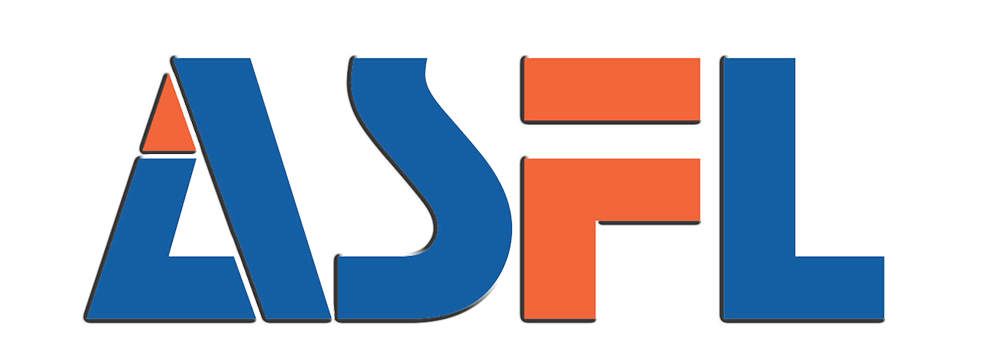The Challenge of Foam and Carbonation Loss in Filling Processes
Getting carbonated drinks filled properly requires pretty exact control since even small pressure problems can cause foaming issues or result in losing over 8% of CO2 from each batch according to Ponemon's research from last year. The old school gravity methods just aren't cutting it when it comes to keeping those bubbles stable while moving liquids fast across production lines. That's why newer equipment for carbonated beverages now includes special pressurized areas that keep things around 2.5 to 3.5 bars of pressure throughout the process. These systems help prevent unwanted gas release as bottles and cans pass along the assembly line, which makes a big difference in product quality and consistency for manufacturers.
Counter-Pressure Filling Technology: Maintaining Pressure to Retain CO2
The most effective systems use three-phase counter-pressure filling:
- Pre-purging: Ambient air is replaced with CO2 to prevent oxidation
- Equalization: Vessel pressure is matched to the filler’s internal pressure within ±0.1 bar
- Liquid injection: Controlled flow at 10–15°C ensures stable carbonation
This method achieves 97.3% CO2 retention, significantly outperforming non-pressurized systems, which retain only about 82%, based on 2023 bottling line trials.
Advancements in Filling Valve Design for Improved Carbonation Control
Next-generation valves incorporate innovations that enhance laminar flow and reduce turbulence:
| Innovation | CO2 Preservation Impact |
|---|---|
| Dual-seat diaphragm valves | Reduce gas escape by 30% during nozzle retraction |
| Laser-etched flow channels | Maintain laminar flow (Re < 2000), preventing nucleation |
| Self-cleaning jet nozzles | Eliminate residue-induced turbulence |
According to a 2024 Filling Technology Report, these upgrades enable craft breweries to achieve less than 0.5% carbonation variance between cans—critical for preserving flavor consistency in sensitive beverages like hop-forward sodas and artisanal sparkling drinks.
Can Filling vs. Bottle Filling: Key Differences in Sealing, Pressure, and Flow Dynamics
Structural Integrity: Why Cans Handle Internal Pressure Differently Than Bottles
Aluminum cans withstand 5–6 psi internal pressure due to their uniform cylindrical design—about 30% higher than typical glass bottle limits (Packaging Insights 2023). Their minimal flex under carbonation reduces CO2 loss during transport, unlike PET bottles, which can expand up to 2% under pressure, increasing the risk of gas diffusion over time.
Sealing Mechanisms: Lid Seaming vs. Capping in Carbonated Beverage Packaging
Double seam technology used by can fillers creates an airtight lid seal within just 0.8 seconds, forming an oxygen barrier that's about 15 times better than regular screw caps. Bottles with crown tops or threaded closures let between 0.05 and 0.1 parts per million of oxygen sneak in every hour, which really speeds up how flavors break down over time, especially noticeable in things like artisan sodas where freshness matters so much. According to some packaging studies from last year, drinks stored in cans keep around 98% of their fizz after sitting for six months while bottled versions only manage about 89%. That makes a big difference for manufacturers looking to maintain product quality.
Integration with Production Lines: Infrastructure Needs for Each Format
Bottle filling lines require:
- Capping stations with precise torque control
- Conveyors adaptable to various bottle shapes and sizes
Can lines demand:
- Seamers with sub-0.001" alignment accuracy
- Nitrogen flushing systems prior to filling to displace oxygen
Switching between formats typically takes 48–72 hours, reinforcing the value of dedicated carbonated drink filling machines for producers focused on a single packaging strategy.
Production Efficiency and Scalability: Comparing Throughput and Automation Levels
Carbonated drink filling machines must balance high-speed operation with consistent CO2 retention—a challenge where automation directly impacts yield and profitability.
Speed and Output: Rotary Can Fillers vs. Linear Bottle Fillers
Rotary can fillers operate at 1,200–2,400 cans per minute using simultaneous multi-nozzle filling, leveraging the uniform shape of cans for rapid, stable processing. Linear bottle fillers, constrained by sequential handling and variable container geometries, generally max out at 600 bottles per minute.
Automation Reduces Labor Costs and Human Error in Filling Operations
Automated systems reduce labor costs by up to 40% while maintaining 99.5% fill accuracy—essential for preserving carbonation. PLC-controlled machines equipped with real-time pressure monitoring cut product waste by 18% through dynamic valve adjustments during cycles, according to a 2023 industry analysis.
Case Study: How Craft Breweries Scale Using Modular Filling Systems
A Midwestern craft brewery doubled its output without major infrastructure changes by adopting a modular rotary canning line. With seaming heads adjustable between 12oz and 16oz formats, the system achieved 85% capacity utilization—up from 60% with its previous bottle-only setup—demonstrating how flexibility supports scalable growth.
Cost Analysis: Total Investment and Long-Term Savings in Carbonated Drink Filling Machines
Upfront Equipment Costs: Can Filling Machine vs. Bottle Filler Systems
Can filling systems involve an 18–35% higher initial investment due to advanced pressure controls and automated seamers. A 2024 Filling System Analysis reports average prices of $385,000 for rotary can fillers versus $260,000 for linear PET bottle systems, both rated for 150 containers per minute.
| Cost Factor | Can Filling Machine | Bottle Filler System |
|---|---|---|
| Base equipment cost | $280k–$420k | $190k–$310k |
| Ancillary systems (CO2 recovery, rinsers) | +$65k | +$40k |
| Installation/calibration | 120–160 labor hours | 80–120 labor hours |
Maintenance, Energy Use, and Spare Parts: Ongoing Operational Expenses
Bottle filling systems typically use about 22% less power each year compared to their can counterparts (around $18k versus roughly $23k). However many facilities find that the savings get balanced out when looking at material waste reduction benefits. Maintenance costs tell another story though. For can fillers, those high pressure valves alone eat up nearly two thirds of all repair bills. Bottle systems meanwhile tend to need regular adjustments to their capping heads which adds up over time. An interesting twist comes from automated lubrication setups. Plants that install these kinds of systems report saving anywhere between $2k and almost $4k every quarter on maintenance work for both types of equipment.
Calculating ROI for Small to Mid-Sized Beverage Producers
The break-even formula for carbonated drink filling machines considers:
(Annual savings from increased throughput) + (Material waste reduction) – (Depreciation + Maintenance)
Producers achieving ROI in under 24 months typically:
- Operate two or more shifts daily
- Maintain a product loss rate below 1.2%
- Use modular, format-adaptable systems
One 150,000-case/year brewery reported $218,000 in savings within 18 months by reducing CO2 loss and packaging defects through hybrid filling technology.
Future Trends: Sustainability, Flexibility, and Innovation in Carbonated Beverage Filling
Sustainability-Driven Shifts: Lightweight Cans, Recyclable PET, and Reduced Waste
Manufacturers across the beverage sector are moving away from traditional packaging options these days. More companies are opting for lighter weight aluminum cans alongside those recyclable PET bottles we see everywhere now. Why? Well, they want to do their part for the planet obviously. According to something called the Beverage Tech Report from 2025, these new sealing technologies have actually cut down on wasted materials by around 35%. That's pretty impressive when you think about all those production lines running day and night. And get this - even though the cans themselves are thinner than ever before, they still hold up just fine structurally. Plus there are these plant based liner materials being used now too. A study published last year showed that about 98% of these containers end up getting recycled rather than sitting in landfills somewhere. Makes sense why so many brands are jumping on board with this green initiative stuff.
Hybrid Filling Lines: Supporting Multi-Pack Formats and Mixed Packaging
Modern production lines integrate can and bottle filling on shared platforms, reducing format changeover times by 60%. RFID-enabled container tracking improves switching speed by 40%, enabling efficient production of limited-edition multi-packs without separate runs, per Beverage Packaging Innovations 2025.
Preparing for Next-Gen Tech: Smart Monitoring and Regulatory Compliance
IoT sensors now predict CO2 leakage risks with 99% accuracy, automatically adjusting filler parameters to preserve carbonation. Real-time compliance dashboards monitor emissions and recycling rates, helping manufacturers align with upcoming EU regulations. By 2026, 70% of filling systems are expected to use AI-driven quality control, eliminating the need for manual inspections.
Frequently Asked Questions
Why is maintaining CO2 during the filling process important?
Maintaining CO2 is crucial for preserving carbonation, which ensures the drink remains fizzy and retains its intended flavor profile.
What is counter-pressure filling technology?
Counter-pressure filling technology uses a method of equalizing pressure between the filler and the container to retain CO2, reducing oxidation and maintaining product quality.
How do cans differ from bottles in handling internal pressure?
Cans have a uniform cylindrical design that allows them to withstand higher pressure, minimizing CO2 loss during transport compared to bottles.
What are the cost benefits of using automated filling systems?
Automated filling systems reduce labor costs, enhance accuracy in filling operations, and minimize product waste, resulting in significant cost savings.
Table of Contents
- The Challenge of Foam and Carbonation Loss in Filling Processes
- Counter-Pressure Filling Technology: Maintaining Pressure to Retain CO2
- Advancements in Filling Valve Design for Improved Carbonation Control
- Can Filling vs. Bottle Filling: Key Differences in Sealing, Pressure, and Flow Dynamics
- Production Efficiency and Scalability: Comparing Throughput and Automation Levels
- Cost Analysis: Total Investment and Long-Term Savings in Carbonated Drink Filling Machines
- Frequently Asked Questions





